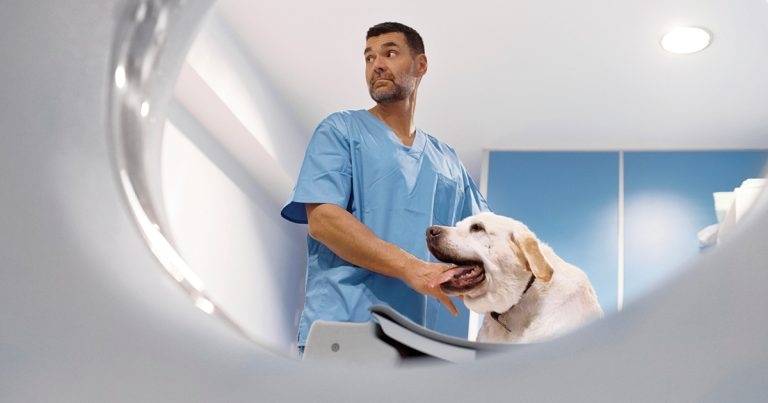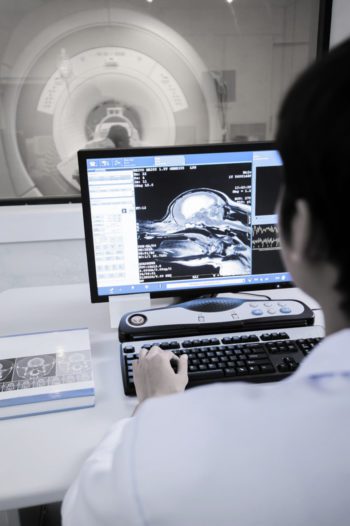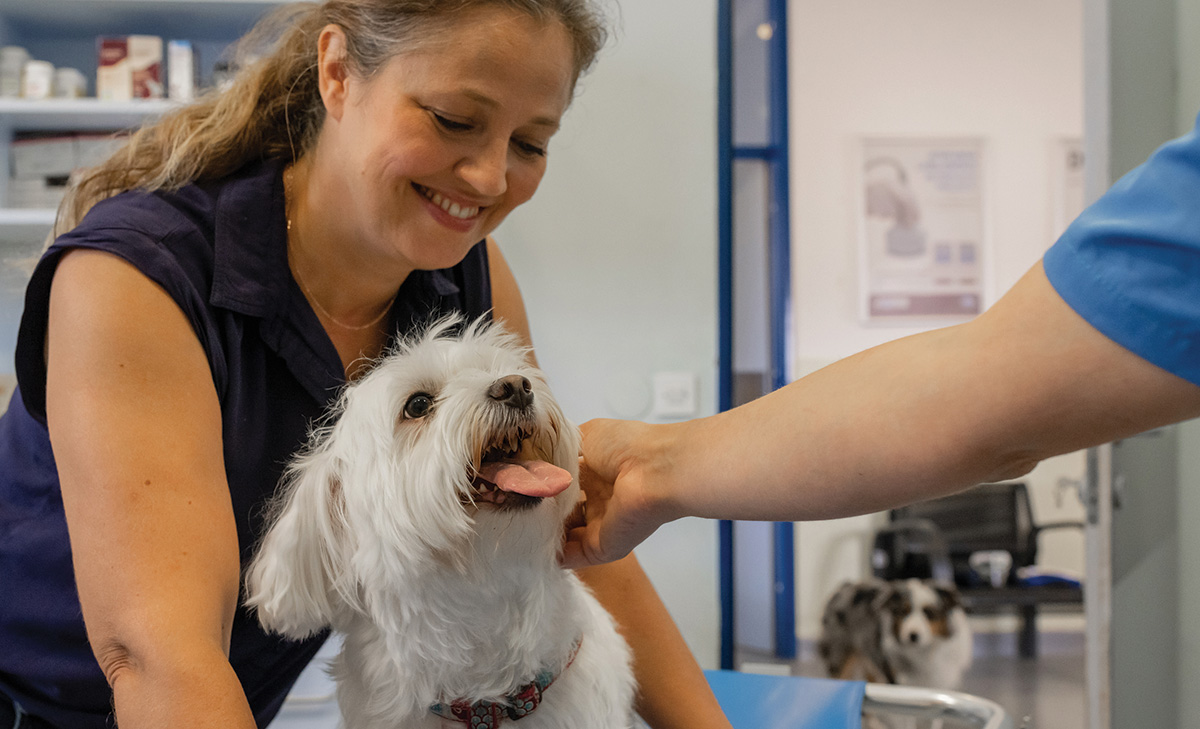1 Dec 2023
Advanced imaging was once the preserve of referral centres and teaching hospitals, but an increasing number of practices now offer these modalities in a first opinion setting. However, the integration of these technologies can be a highly complex issue and there is much to consider before making such a significant investment…

Image © iStock.com/Morsa Images
These techniques include ultrasonography (US), CT and MRI, with US being the most widely spread technique in first opinion settings.
All these technologies can be used for the diagnosis and treatment of a great variety of conditions in companion animals.
For some GP practices, advanced imaging might be seen as an expensive luxury, while for others it is an essential tool.
In this article, the author hopes to work through this dilemma by comparing advantages and disadvantages of integrating advanced imaging into everyday veterinary primary care, as well as the cost and benefits.
One of the main advantages of these advanced imaging techniques is that US, CT and MRI are non-invasive modalities of diagnosis, reducing the need for more invasive techniques, such as exploratory surgery.
These modalities allow veterinarians to visualise internal structures with exceptional clarity, making it easier to identify subtle abnormalities that may be missed with traditional radiography or physical examinations, as well as identifying issues at an earlier stage, leading to more effective treatment options.

US is a good technique to examine all the abdominal organs, as well as the heart, providing the assessment of the parenchymal or hollow organs, the content or even the motility of the gastrointestinal tract and heart function.
Although this technique is also becoming more and more frequently used to evaluate the thorax of patients with respiratory distress that cannot undergo a radiograph, as well as to evaluate the rest of the musculoskeletal structures and eyes.
CT and MRI are the most advanced imaging techniques and are usually only available in referral veterinary hospitals. Both modalities are cross-sectional techniques that perform multiple views of the patient with only one exposure.
CT is excellent for soft tissues, thoracic cavity and bony structures, whereas MRI provides good details of the nervous system (brain and spine) and musculoskeletal structures. On the other hand, patients that are undergoing US or MRI do not need to be exposed to ionising radiation, making them safer for patients.
All these modalities also offer superior diagnostic accuracy compared to radiographs, allowing for the early detection and characterisation of multiple different medical conditions, and enhancing the treatment outcomes of the patients.
As well as providing important information for accurate surgical planning, these techniques can also be repeatable in cases that need periodic re-checks, looking for metastases or tumours staging.
Probably the most important disadvantage of the advanced imaging techniques is the high costs of the acquisition, installation and maintenance of all equipment. These costs are often a significant barrier to primary or small veterinary practices, which cannot afford those prices.
This disadvantage leads to limited accessibility, with many practices in certain regions having limited access to advanced imaging modalities and patients must be commuted to a closer referral hospital, delaying their diagnosis and treatment.
Another disadvantage is that most of these techniques require sedation or general anaesthesia, and this could be an additional possible risk on very ill patients, as well as an additional extra cost.
Additionally, in some cases, a tendency exists to overuse advanced imaging to try to “fish” for the final diagnosis, leading to unnecessary exposure and, in the case of CT, unnecessary exposure to ionising radiation. The cumulative doses of this radiation may cause some risks to patients; therefore, they should be avoided as far as possible.
Finally, all advanced imaging modalities require specialised training – not only to perform the techniques, but also skilled professionals to ensure an accurate interpretation of the findings.
The advantages and disadvantages of advanced imaging techniques need to be considered together – not individually. Maximising the benefits and minimising the drawbacks requires consideration of a thoughtful approach, empowering primary care veterinarians who must always prioritise patient safety and well-being.
Advanced imaging techniques provide critical information to guide veterinarians making treatment decisions – especially in complex cases. They can approach the final diagnosis more precisely, minimising guesswork and ensuring the best possible care and treatment for pets. These modalities can enhance owners’ satisfaction by offering them the best understanding of their pet condition, and also provide the best treatment decision or plan.
The integration of advanced imaging into first opinion practice is a complex issue, hinging on a balance between the benefits and costs involved. It is undeniable that these technologies offer an invaluable window into the health of our pets, improving diagnostic accuracy and enhancing overall patient care. However, the expenses associated with acquiring and maintaining advanced imaging equipment, along with the need for continuous staff training, are not to be taken lightly.

The answer to whether advanced imaging is a luxury or an essential tool in first opinion practice lies in the circumstances of each practice, owners and financial resources.
For some practices, the investment in theses modalities is justifiable due to a high caseload, complex cases or owners who can afford the cost of advanced diagnosis. In other scenarios, where the space or the high cost of these machines is a limit, they need to consider other options, such as referral to other referral centres where US, CT or MRI are available.
Advanced imaging techniques have transformed the fields of veterinary medicine and are an undoubtedly valuable tool, offering improved diagnostic capabilities and providing the best care to our pets.
These techniques offer many advantages – such as a precise, non-invasive diagnosis – and also contribute to patients being diagnosed at an early stage of their condition. However, their disadvantages – including high costs and limited accessibility – should not be overlooked.
If practices want to provide the best care to patients and their owners, they should weigh the advantages against the costs, balance them and decide which advanced imaging technique is the most suitable for their type of practice or patients.